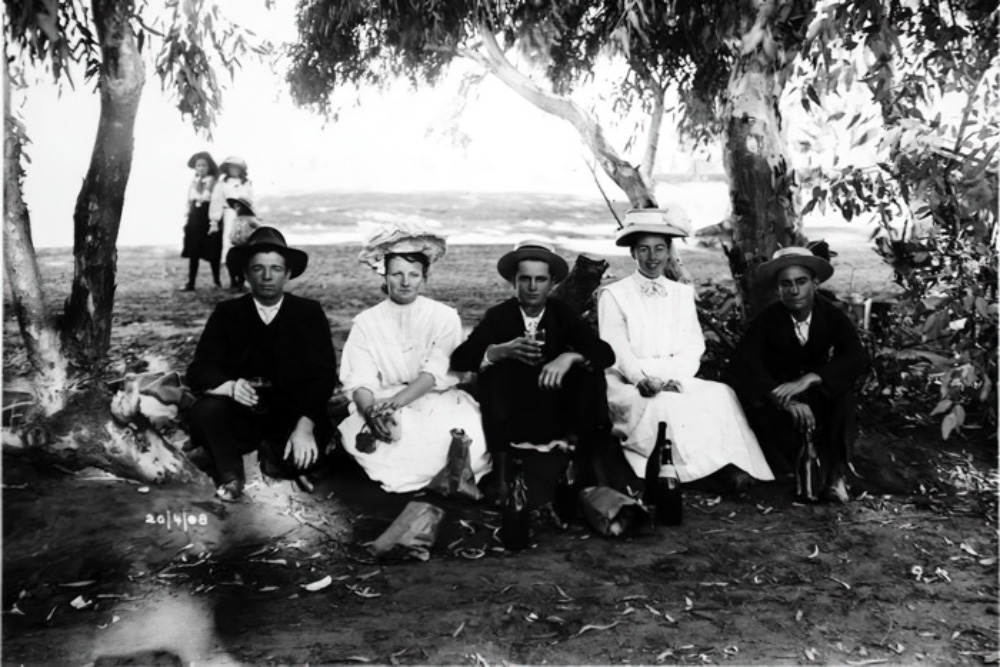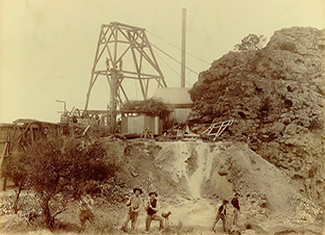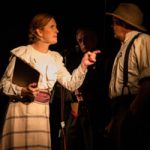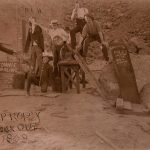


Welcome to broken hill history
EXPLORING THE STORIES OF AUSTRALIA’S FIRST HERITAGE CITY
History projects
‘United We Stand’ Heritage Performance
In this entertaining short live show, you’re invited to step back in time to May 1919, and explore the city’s mining past as you join local actors in a ‘union meeting’ of the Amalgamated Miners Association (AMA), set on the eve of the strike action that changed Australia forever. Building on previous strikes, the ‘Great Strike’ saw the community work together in solidarity for 18 months between May 1919 and November 1920 to strike against unsafe working conditions and low wages in the Broken Hill silver mines. This action remains one of the hardest-fought industrial disputes this country has ever seen. The coordinated efforts by workers and their families paved the way for better pay, safer working conditions, and a workers compensation scheme for injured workers. These agreements formed the platform for our current national WHS and Compensation Acts, and contributed to Broken Hill being named Australia’s first Nationally Heritage Listed City in 2015. ‘United we stand’ tourist play was commissioned for the Indian Pacific off-train experiences by Journey Beyond, and has been seen by around 10,000 passengers since it’s inception in April 2017? The show has since been performed by an increasing number of local actors who have helped highlight this important part of our local and national heritage. The shows have now been performed in the community at events including the Broken Hill Heritage Festival ‘Heritage Highlighted’ event, Mundi Mundi Bash fringe in town square, and to open a concert in Trades Hall. In addition, the success of the show lead to a successful NSW Government Heritage Grant, ‘United We Stand: Strikes Scabs & Solidarity in Broken Hill’, which saw the concept expanded to include the development of props and costumes to produce Augmented Reality Postcards featuring recreations of the 1909 Lockout and early Picnic Days. For more information contact UWS@brokenhillhistory.com Download the script [LINK / download]View photo gallery [LINK to gallery]
Strikes, Scabs and Augmented Reality in Broken Hill
Postcards were the ‘Social Media’ of years gone by. See history come to life through the development of reproduction props, costumes, and Augmented Reality Postcards inspired by famous Broken Hill postcard photographs featuring short video clips produced locally for ‘United We Stand: Strikes Scabs and Solidarity in Broken Hill’. INSERT PIC OF one or two ACTUAL POSTCARDS OF GRAVES In the early years of Broken Hill, it was common for people to reproduce postcards to share with the community. This was done for a number of reasons. Some of the most famous examples of Broken Hill postcards were the images of mock graves and campsites captured and shared during the militant 1909 Lockout and early Picnic Days. In the lockout, Tom Mann famously unionised the workforce and helped convince the workers of BHP to strike for better wages. He then took the postcards to England to assist motivating workers to join the cause for solidarity in the labour movement there. Caption: some of the crew who helped bring history to life. Film shoot in Dec 2021. About the Project: Based on the successful United We Stand Tourist play, funding was secured for a NSW Government Heritage Grant to develop United We Stand: Strikes Scabs & Solidarity in Broken Hill, which included the development of props and costumes to produce Augmented Reality Postcards featuring recreations of several postcards from this period. The final postcards produced focussed on the early unionisation period of Broken Hill’s history and feature two postcards from the 1909 lockout and one of a picnic in a creek bed in 1908. In addition to recreating mock graves and costumes from the period, we were able to incorporate Augmented Reality experience to bring history to life. Th post cards are for sale at selected museums as a fundraising initiate to help these vital community resources. Check out ‘Outback Museum Stories’ to find out more about Broken Museum experiences. How it works: By scanning the QR code you can access the technology to hold a mobile device over the video to watch a video as the post card has come to life. Read on for examples of the postcards as well as the reference images and videos created. Picnic Day 1909 Lockout Effigy 1909 Lockout Mock Graves
broken hill history stories
- Postcard Stories

On Easter Monday, a party of young men and women enjoy a picnic at Silverton. When the mines and sulphurous smelters of Broken Hill denuded the nearby hills of trees, the Silverton Tramway Company delivered day-trippers to the shady creeks at Penrose Park, Silverton and McCulloch Park, Tarrawingie. Little did these revellers imagine the stormy year which lay ahead for the families and miners working on the Broken Hill line of load. The original Picnic photograph, was described as ‘At the Rechabites’ Picnic’1. The Rechabites Lodge was a Friendly Society offering members assistance in times of hardship and illness and promoting total abstinence from alcohol. There were thirty seven Friendly Societies and Lodges operating in Broken Hill in 19082. These included the Manchester Unity Independent Order of Oddfellows. An accident had occurred at the MUIO picnic the year before this photograph was taken, when a young boy named Alick Pengelley wandered away and drowned in a nearby dam3. It was not the last time a Manchester Unity picnic would be marred by tragedy. On New Year’s Day, 1915, the Manchester Unity picnic train was the target of the first foreign attack on Australian soil during World War 1. Two disaffected…

The story of Broken Hill begins with the search for water. The Bulalli, Barkinji and Wilyakali river people, wandered the arid lands of what colonials later called Far Western New South Wales in search of food and water. Some tribes held ceremony and painted rock art in watering places such as Muttawintjie. They knew the location of soaks and creeks that to the naked European eye were merely hollows and stony beds. From 1850, the Darling River (Barka) supported Squatter’s cattle and sheep. Drovers kept moving west in search of new pasture and water. Bullock teams supplying the outstations and carting wool to and from South Australia, watered at the Thackaringa Dam. Unsurprisingly, the discovery of minerals was made by two well sinkers, Nickel and McLean. They plonked a lump of Galena on the bar of John Stokie’s grog shanty and he identified the first specimen of Silver-Lead ore on the Barrier Ranges. Another publican, Paddy Green of Menindee, pegged the claim as the Pioneer Mine in 18761. Three years later, John Stokie meandered on in his quest for water and beer, and established the Umberumberka store, advertising wine and spirit discounts for station hawkers. It was situated on flat…


